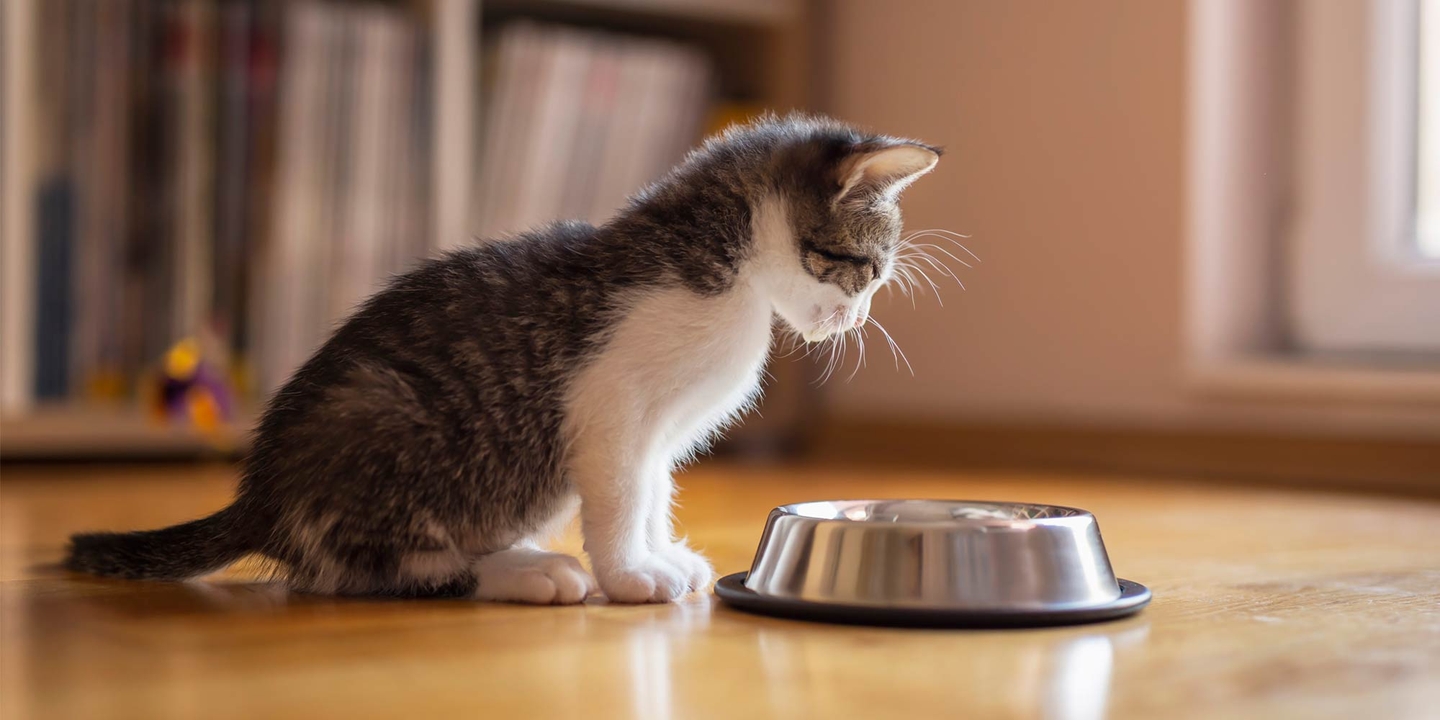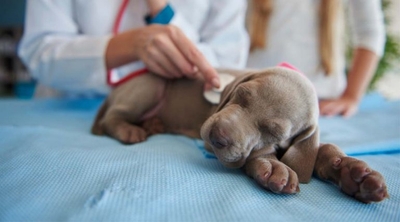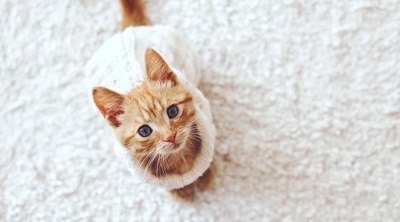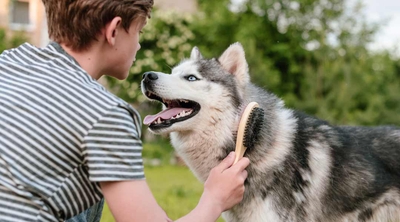When to switch a kitten to cat food
3 min read
Your sweet little kitten is a bundle of fur, energy, and purrs. Every milestone in your kitten’s life is worth celebrating — including the moment when your kitten is ready to transition to adult cat food. But when exactly is it time to switch from kitten to cat food? And how can you make that transition as smooth as possible?
If you’re wondering when to switch from kitten to cat food, this guide will help you navigate this big change in your little kitten’s life.
Kitten food vs cat food: What’s the difference?
Kittens’ nutritional needs are very different from adult cats. They’re using up lots of energy while they run, pounce, and play. Because of this, they need a lot more calories for their little growing bodies.
According to the Association of American Feed Control Officials’ (AAFCO) nutritional standards, kitten food (referred to as “growth and reproduction” food) needs a minimum of 30% protein, while adult cat food should have 26%.
There are other differences too, with kitten food needing higher levels of nutrients like arginine and lysine, as well as certain minerals like calcium, phosphorus and magnesium and vitamins like vitamin A and vitamin D.
When can kittens eat dry food?
Kittens have tiny teeth. Right after they’re weaned, their little teeth may struggle with dry kibble, so it’s best to give them wet food. However, by the time most kittens are adopted, they’re already six to eight weeks old, weaned, and eating solid food. This means that by the time your kitten arrives in your home, she’s probably more than ready to handle dry food.
At that point, it’s really a matter of personal preference whether a kitten gets wet or dry. Wet food can help with hydration since it has more moisture. It may also mimic a more natural diet, similar to what feral cats eat. Ask your veterinarian for help deciding which is best.
How long should a kitten eat kitten food?
Kittens typically don’t need to switch to adult cat food until they’ve reached full maturity, around 10 to 12 months of age. However, the exact age can vary. Some cats reach full maturity (and lower energy needs) sooner and should transition to cat food earlier so they don’t become overweight. But larger breeds may not reach maturity until later when they’re 18 to 24 months old.
As kittens age, they also need fewer meals a day. When their tummies are small, kittens need to eat frequently. So when they’re about six to eight weeks old, they’re eating three to four times a day. (In fact, free-feeding at this stage is also fine unless they become overweight.)
Around five months of age, you can transition to two meals a day. They’ll still be eating the same number of calories per day, but in less frequent, larger meals. You’ll stick to this schedule of two meals a day when they transition to adult cat food, unless your veterinarian suggests otherwise.
How do you help your kitten transition to cat food?
Once your veterinarian believes your kitten is ready for adult cat food, how do you make the switch? The secret is taking it slow. If you make the change overnight, your cat’s sensitive tummy could get really sick! Instead, take about a week to make the switch. First, give your cat a mix of about 25% new adult food and 75% kitten food. Slowly mix in more and more adult food as the week progresses, until you’re feeding only adult cat food.
The bottom line
Raising a kitten is a rewarding experience, full of many milestones — including the big switch to adult food. With a pet insurance policy from Pets Best Insurance, you can be ready for any unexpected changes that may happen as your kitten grows. Policyholders also have access to a 24/7 veterinarian helpline that they can call if they have any questions about their kitten’s dietary needs or health.





